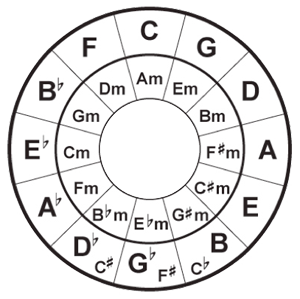In this lesson, I’m going to help you understand how harmonica keys work so that you can always figure out the right harmonica to choose in order to sound great when playing with a band or a jam track. I’m also gonna teach you a killer 2nd position Blues riff that requires no bending. It’s the beginning riff from the Muddy Waters song, Cross-Eyed Cat.
I’m using a C harmonica, in 2nd position, in the key of G. Any 10-hole diatonic C harmonica will work for this lesson. This lesson assumes that you already know how to isolate notes. You do not need to know how to bend. That’s one of the great things about this riff – it sounds awesome, and requires no bending!
Why Harmonica Players Get a Bad Rap
There’s been a few times when I have approached a band leader on a set break at a show to ask if I might be able to sit in on a song on harmonica, when all of a sudden I see a look of dread and terror in his eyes, like he’s a deer caught in the headlights.
I get it. He’s been traumatized by that over-eager harmonica player who hasn’t taken the time to properly learn about keys (and apparently in his excitement has turned his ears off as well!) While he’s wailing up there, eyes closed, imagining that he’s really hitting the note, the rest of us are hearing the painful reality of what’s actually going on. It sounds awful. He’s in the wrong key. Instead of sounding like music, it sounds more like a cat in heat!
Have you ever witnessed this? I have, and, sadly, on more than one occasion! It makes me cringe. “No!” I think to myself. “You’re ruining it for the rest of us harmonica players! You’re giving us a bad name!”
The Good News…
I can’t tell you how many times I’ve played a set with a band and had one of the band members say to me afterwards, “You’re awesome! You actually know how to play in the right key! You know, I used to play with this harmonica player, and he was a nice guy, but he….”
If I don’t have the right key harmonica to play on a particular song, I will just sit that one out. It requires restraint and humility, but it’s the right thing to do.
Friends don’t let friends play harmonica in the wrong key! Don’t worry, it’s not too hard to learn how to choose the right harmonica for the song. Armed with the right knowledge, you’ll be the awesome harmonica player who always plays in the right key.
Understanding Harmonica Positions & Keys
I’m not going to get too deep into the subject of keys and positions because you don’t have to understand all the inner workings of music theory in order to choose the right harmonica. You really only have to understand a few things.
While pianists change keys by substituting black keys for white keys, and guitar players change keys by changing the fret they’re on, harmonica players change keys by grabbing a different harmonica.
In the beginning, you really only have to worry about two positions: 1st position (also called Straight Harp) and 2nd position (also called Cross Harp.)
1st Position = Straight Harp
The name of the key that is printed on the front of the harmonica, is the 1st position key. So on a C harmonica, if we’re playing in 1st position, we will be playing in the key of C.
The way I describe the sound of 1st position harmonica is “folksy.” Think Bob Dylan. 1st position is oriented around blowing, with the blow 1 and blow 4 holes being the root note C. If you’re playing a song in C that has no 7 chords, like many modern pop songs and country songs, you’ll want to choose 1st position. Or, if you’re playing in C with Cmaj7 chord (as opposed to C7) you’ll want to choose 1st position. A lot of groovy songs from the 70s have this kind of tonality. To me, Easy Like Sunday Morning is a great illustration of this.
Or, for an example with harmonica, Before the Rain. Many reggae songs also have this kind of tonality.
One of the reasons I loved Lee Oskar harmonicas when I first started playing is that, in addition to being easy to isolate notes and easy to bend, the 1st position key is labeled on one side of the harmonica, and the 2nd position key is labeled on the opposite side. Great idea, Lee! But even if you don’t play Lee Oskars, it’s really not too hard to find the cross-harp key from the first position label.
2nd Position = Cross Harp
The name of the 2nd position key is up a 5th from the 1st position key. To find the note that is up a 5th, simply call the 1st position key labeled on the harmonica the number “1” and count letter names up to “5.” So if C =1, for example, than we would count up D = 2, E = 3, F = 4, G = 5. So, on a C harmonica, 2nd position is the key of G. The way I describe the sound of 2nd position harmonica is “bluesy.” 2nd position is oriented around drawing, with the draw 2 hole being the root of G.
It’s true that it is possible to play the Blues in first position (Jimmy Reed was a master of it) but to do so requires advanced skills. Playing in 3rd position also requires more advanced skills. At the beginning, if you’re playing the Blues, you want to be playing in the 2nd position.
Harmonica High-Five!
Ok, so when I started playing the harmonica, I would get so confused about determining keys (you’ll see why it can get confusing in a minute.) Even when I started playing professionally, I’d still occasionally lean over to my buddy and be like, “Wait, which harmonica should I be using for this one?” But I’ve come up with a couple tricks to help you remember, so that you can play with confidence!
The first is “Harmonica High-Five”. You can remember this because Harmonica and High-Five both start with the letter H. This is to help you remember what you just learned: If you know the key of the Harmonica you have, and want to know what key you will be in for 2nd position, count up 5 notes. Give the Harmonica a High-Five, and count up 5 notes from the 1st position key.

This is handy if you only have a C harmonica with you; you can tell someone, “OK, if you can play a Blues in the key of G, I can play along with you!”
Which Harmonica 4 This Blues?
Here is the second trick, and the part that could get confusing if we didn’t have the trick! If you know the key of the Blues song that you want to play along with, and you want to choose the right harmonica for that Blues, you count up 4 notes from the key that the song is in. Then you will have the right harmonica for the Blues song (or any song you want to play 2nd position on).

You can see this is true by checking, “What harmonica would I choose for a G blues?” Count up from the song key: G=1, A=2, B=3, C=4. So we will need to choose a C harmonica to play a G Blues. And you can remember this because, in English, “4” sounds the same as “for”. So think, Which Harmonica 4 this Blues Song? and count up 4 notes from the key of the song.
So, to review:
If you know the key of the harmonica, think “Harmonica High-5,” and count up 5 notes to find the key of Blues you can play.
If you know the key of the song, think “Which Harmonica 4 this Blues?” and count up 4 notes to find the key of the harmonica to choose.
Harmonica Help From the Circle of Fifths
With so many things in the natural world, it’s fascinating when we discover the amount of mathematical and geometrical order within them, and music is no exception. The diagram called The Circle of Fifths is a circle with the 12 keys of Western music arranged like hours on a clock. Moving clockwise we ascend by 5ths, and moving counter-clockwise we ascend by 4ths. You might already be sensing what a valuable diagram this could be for harp players.

TIP: Right Click and Choose: Save or Download, then you can print this image.
Look at the top of the diagram and see C. If we move one space clockwise, we have our cross-harp key of G! To find the cross-harp key for any harmonica, find the key of the harmonica on the Circle of Fifths, and move one space clockwise.
The Circle of Fifths is such a handy tool for harmonica players, I know a lot of people who have printed it out and attached it to the inside of their harmonica case.
On the Circle of Fifths, I can just find the key of the Blues song, and move one space counter-clockwise. If you know the key of a Blues song and want to find which harmonica to use, find the key of the song on the Circle of Fifths, and move one space counter-clockwise.
As an alternative to the Circle of Fifths, you could also use a simple chart of harmonica keys and keys of other positions such as this

TIP: Right Click and Choose: Save or Download, then you can print this image.
What About Other Positions?
For harmonica, it also turns out the Circle of Fifths is handy for more than just 1st and 2nd position. On a C harp, one space clockwise is G, which is 2nd position, two spaces is D which is 3rd position, three spaces is A, which is 4th position, four spaces is E, which is 5th position, etc. I’m just mentioning this because I think it’s cool but, again, my advice to beginners is to stick with learning 1st and 2nd position.
I started playing harmonica professionally after I’d been playing for a few years, and I probably played for 15 years before I even learned anything about 3rd position. I’d say more than 90% of popular music with harmonica in it is played in 1st or 2nd position.
The only exception to this I can think of would be if Little Walter is like the only reason you want to learn harmonica, then you might get into 3rd position sooner. Otherwise, my advice is, don’t even worry about learning other positions – 1st position and 2nd position were enough to keep me happy for 15 years!
If you are still wanting to get deeper into understanding the music theory of positions and tunings, check out our other awesome blog on the subject Bamboozled by Harmonica Keys? Harmonica Positions Explained.
Accidentals
The definition of the word “accidental” (as it relates to music) is simply a symbol that modifies a pitch. Namely these are:
Sharps, written as #
And flats, written as b.
A sharp (#) after a note name means you raise the pitch a half-step. You can remember this by thinking that a “sharp” employee will rise through the ranks.
A flat (b) after a note name means that you lower the pitch a half-step. You can remember this by thinking when you’re tire is flat, you sink down.
When a note has no sharp or flat after it, it is called natural. A natural note corresponds to a white key on the piano.
Sharps and flats correspond to black keys on the piano, and each black key has two names. It’s sharp compared to the white key on the left, and flat compared to the white key on the right. So C# is the same note as Db. These 2 notes are said to be enharmonic, meaning they are the same pitch, even though they have different names.
So, if someone was playing a Blues in Db (highly unlikely!) and you count up 4 to find the harmonica for the song, you arrive at Gb. Well there is no Gb harmonica! But there’s an F# which is enharmonic. It’s the same thing. So you would use your F# harmonica.
If you are trying to figure out what harmonica to use for a song, and you don’t have the Circle of Fifths or another chart handy, there are 2 exceptions you need to be aware of.
B harmonica in 2nd position is F# (also called Gb)
Bb harmonica in 2nd position is F
Thinking about it the other way, if you want to choose a harmonica for an F Blues, you need to choose the Bb harmonica. And if you want to choose a harmonica for an F# Blues, you need to choose a B harmonica.
Other than that, the accidental (sharp or flat) of the key will correspond to the same accidental (or its enharmonic) on the harmonica.
How to Always Choose the Right Key Harmonica for a Song?
1. Determine the key of the song.
2. Determine whether the song has a folksy, major, easy-like-sunday-morning vibe, or a bluesy, funky vibe. (With your ears open, you’ll be able to tell quickly if you’ve mis-classified, and then choose the other.)
3. If it’s a major vibe, you know already know what key harp to grab. The same key as the song!
4. If it’s a bluesy vibe, you also know what key to grab.
- Grab your Circle of Fifths chart, grab the harp in the key one space counter-clockwise from the key of the song.
- If you don’t have a chart, remember “The harmonica 4 the song.” Count up 4 steps calling the key of the song #1.
5. When counting up to find the harmonica 4 the song, the accidental (# or b) of the key will match the harmonica with these two exceptions:
- If you’re counting up 4 from F, you need a Bb harmonica (rather than a B)
- And if you’re counting up 4 from F#/Gb, you need a B harmonica (rather than a B#/Cb)
A Minor Omission
I have left out one important subject here, and that is the subject of minor keys. The easiest way to play in a minor key is… buy a minor harmonica! Lee Oskar and Hohner both make Natural Minor tuned harmonicas and they play such that 2nd position is minor.
Note, Natural Minor harmonicas are labeled in the 2nd position key. So if you want to buy a Natural Minor tuned harmonica to play with your favorite minor song, buy the same key as the song, and you’ll be playing it in 2nd position. Again, they’re labeled differently than major keys, which are labeled in 1st position. Natural Minor harmonicas are a ton of fun to play!
You can technically play cross-harp in a minor key by bending the draw 3 down a half-step, but it requires a lot of control. The best way to play minor keys on a major harmonica, is to play 3rd, 4th, or 5th position, and, as I mentioned before, these require a lot of bending skill to play well, so it’s not advisable for beginners.What is advisable for beginners, is learning how to play awesome cross-harp licks, like the one from Muddy Water’s song Cross-Eyed Cat.
How to Play cross-Eyed Cat
The first lick from the song Cross-Eyed Cat sounds so cool, but it isn’t hard to play. Here’s what the song sounds like:
Ready to learn it? Here are the harmonica tabs and 3 jam tracks:
-5 5 -4 4 -3 -4
Once you can play this, then try sliding up to the first 5 draw. That’s what really gives this lick its mojo.
Then, when you get down to the draw 3, do a quick bend into the note by saying “oy.”
Congratulations!
If you’ve made it through all of this, I want to congratulate you. You’re taking the time to learn the fundamentals, and it’s going to pay off. You learned some great tricks to remember how to figure out keys, and you learned an awesome lick!
When I first started playing harmonica, I was so confused about keys, and it took me several months to begin to get the hang of figuring out what harmonica I should be playing when, and years before I felt confident about it. So, don’t feel frustrated if it all still seems a bit confusing!
Hang in there, and keep coming back and reviewing the material as necessary, and, before you know it, things will start to come into better focus. Remember, the most important thing is to relax, have fun, and play!

Comments
Got something to say? Post a comment below.